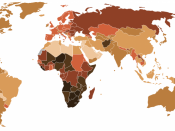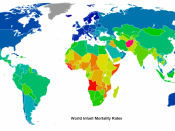ÃÂOnce upon a timeÃÂ, many years ago in 16th century England, an IT was born. Wrenched from a motherÃÂs womb IT was imprisoned in tightly wrapped sheets; head fixed, legs stretched out, arms by its sides; so that IT could not move. IT was sent to a wet nurse by the parents; not for the welfare of IT but for their own selfish reasons. If IT died there would be no emotion or mourning. If IT lived, which was considered very unlikely, IT would be neglected, beaten, and only considered valuable when IT was economically productive and could be sent out to work. IT would not live ÃÂhappily ever afterÃÂ. Such is the ÃÂblack legend of childhoodÃÂ .
There are no birth or death certificates for IT; no biographies or diaries. IT is merely a figment of this writerÃÂs imagination; ITÃÂs life is fictional and based upon theories of childhood put forward by historians such as AriÃÂs, De Mause and Stone .
AriÃÂs claims that, before medieval times, the idea of a state of childhood was non-existent. He concluded that as children were depicted no differently from adults in the art of the time that they were treated the same as adults. Since the publication of Centuries of Childhood (1962), there has been much historiographical debate with historiansÃÂ interpretations falling into two categories; those advocating change believing that the treatment of children improved with the progression of time, and, those advocating continuity, believing that parents have always loved and cared for their children. De Mause writes: ÃÂThe history of childhood is a nightmare from which we have only recently begun to awaken.ÃÂ He asserts that:The further back in history one goes, the lower the level of childcare, and the more likely children are to be killed, abandoned, beaten, terrorised,


